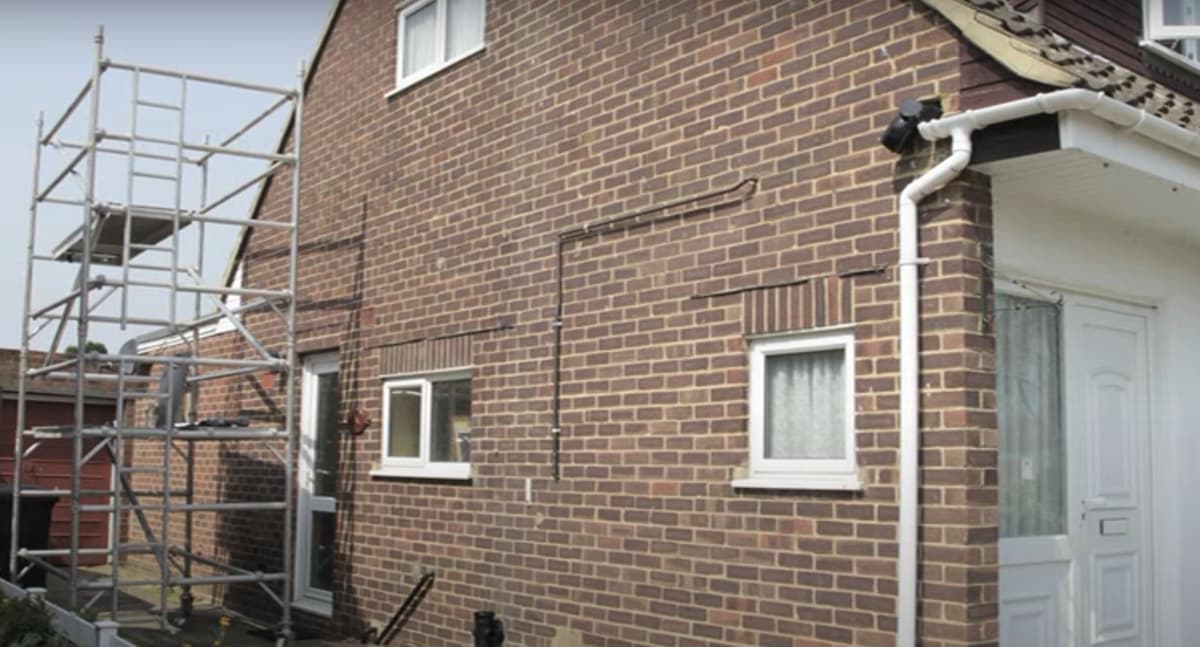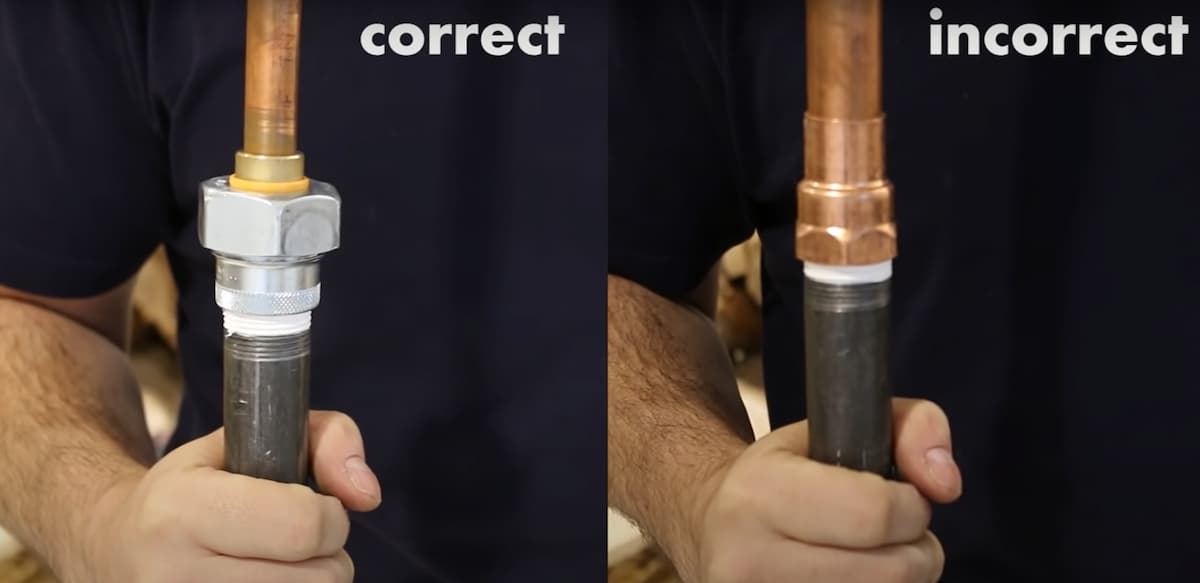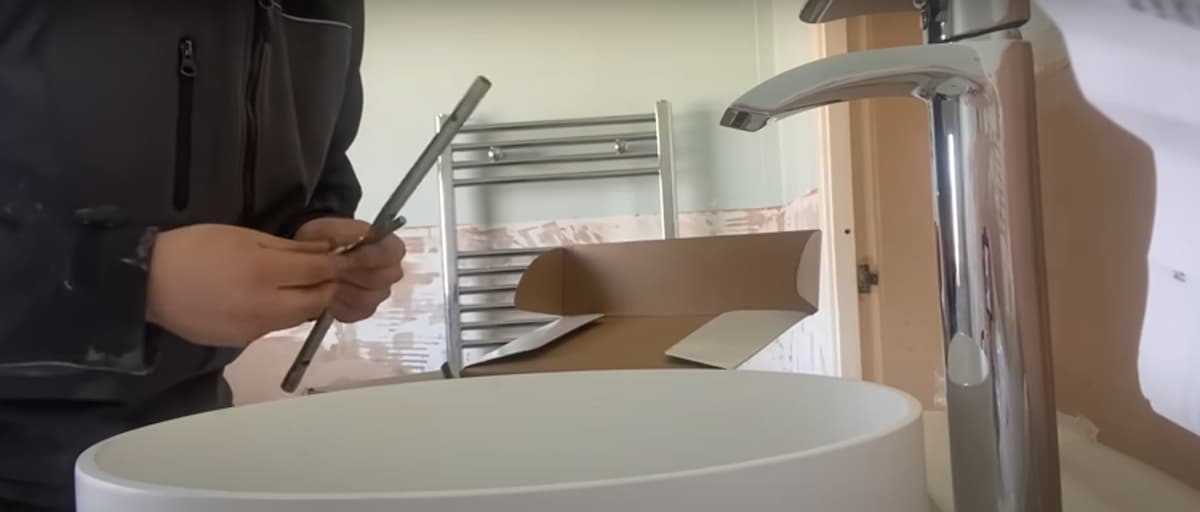
A soil vent pipe is a vertical pipe that connects the top of a home’s underground drainage system to the surface, approximately over roof gutter level. It’s also known as a soil stack pipe, drain waste vent or ventilated discharge tube. Soil vent pipes can be put in buildings. They are more commonly attached to the outside wall in modern high-rise housing. In older homes, they were frequently made of cast iron and sometimes included asbestos, which necessitates extremely rigorous treatment while being maintained. Plastic is currently used in most contemporary soil vent pipes.
What is a Soil Vent Pipe System?
A soil pipe system is an infrastructure that is connected to a home’s soil wastewater drainage system. The soil stack pipe system consists of all the vertical piping, including vent pipes and stack pipes, that connect with this underground system. Wastewater soil pipe drainage system can have one or several pipe joints depending on how many stories are in the building.
A soil vent pipe keeps sewage gas from backing up into your home by bringing it up outside through a stack-like pipe, so odours don’t seep back inside under pressure. The most common soil pipe configuration has a tee joint connecting it to existing plumbing somewhere near the roof gutter line, so water drains down over it as well as down its main section.
Why is Using a Soil Vent Pipe System Necessary?
Sewage gases such as hydrogen sulphide, methane and carbon dioxide can be produced by waste inside the home waste pipe. These gases are odourless which means they are undetectable until built up in high concentrations. This is very dangerous as breathing air containing these gases at high levels for even a short period of time can cause serious injury or death.
Ventilation of this waste gas via an outdoor soil stack pipe allows the system to function properly. The accumulated wastewater and gas flow with gravity through the soil stack pipe to the outdoors where it is released safely instead of being trapped in the home’s drainage system with no way out except through plumbing fixtures or floors.
Soil pipe vents help stop sewer gasses from back-flowing into your home without affecting indoor air quality by releasing them safely at a higher level.
What are the Benefits of Using a Soil Vent Pipe System?
When using vents on soil pipes, they prevent sewer gases from backing up into homes and buildings by releasing them to the outdoors instead of trapping them in the home’s drainage system. The soil pipe vent allows for proper venting, which means odour-free plumbing. Soil vent pipes keep sewer gases from travelling back through your water supply lines, water traps and drains.
Without a proper vent pipe, sewer gas can seep into your home or building from all fixtures including toilets, sinks, showers and tubs as well as floor drains. It is important for public health reasons that the vent pipe be kept clear of debris so that they function properly in releasing harmful gasses when needed most. This way you can ensure the safety of your family by having a ventilated discharge pipe.
What are the Main Parts of a Soil Vent Pipe?
There are three basic components of a soil vent waste pipe system:
- The vertical stack
- Bird guard
- Clean-out cap
The Vertical Stack is the entry point for sewer gases into the drainage system. It’s an extension of the building solid waste sewer located on or immediately above roof level that terminates in the open air to provide for the release of gasses without allowing rainwater to enter. Material options include copper, ABS plastic, PVC plastic or cast iron depending on how it is plumbed into your home’s drain system. Soil vent pipes may be supported adequately with tying straps or other stable means to prevent sagging between floor joists due to their own weight as well as the weight of any water that might accumulate in them.
The Bird Guard is a piece located inside the stack pipe at its termination point. Its purpose is to prevent small animals, debris and birds from entering the vertical stack pipe, which could interfere with proper ventilation. It also prevents rainwater from entering your home’s drain system where it could cause basement flooding or other damage. The Bird Guard can be made of materials such as aluminium or galvanized steel depending on what may best suit your needs.
A Clean-out Cap gives you access to your soil vent pipes when necessary for cleaning outside of building seasons or for adding new branches to the drainage system if needed. It’s simply a device that connects directly to the top of the soil vent stack pipe using either threaded or slip joints. Material options include brass, galvanized steel or ABS plastic.
Soil Vent Pipes Methods
The Three-Pipe Method is the most common way to configure soil vent pipes. It consists of one vertical stack pipe up through the roof with a clean-out cap on top and two horizontal “vent” branches that each run out horizontally at least 1 metre away from the home’s foundation before turning vertically downhill for at least 3 metres (or as far as the landscape may allow). One vent branch typically terminates right above your primary underground drainage system which includes all drain lines located within 6 metres of the structure (i.e. toilets, sinks, showers, tubs and floor drains). The other vent branch typically runs downhill on the opposite side of your structure from the first branch.
In recently constructed homes, there may be a single horizontal soil vent pipe that terminates below ground level as well as a clean-out cap on top of the pipe. While this is not strictly part of the three-pipe method, it is designed to operate in a similar fashion and can work just as well provided you have outdoor access to the clean-out cap so it can be used for cleaning during non-building seasons or if needed.
The Soil Vent Stack Pipe could always terminate above the frost line to prevent damage due to freezing temperatures. In regions where freezing conditions are expected, metal pipes may be insulated up to 3 metres from their termination point using heat tape wrap or other approved methods. The location of the termination point is also dependent on your local code requirements as well as where your other underground building drains are located.
Drain Waste Vent Soil Pipe Combination
There is a combination of the drainage system and a soil vent pipe that can be used in place of separate systems. This combination is most often found in newer homes with regular foundation drain lines and storm drains, but may also be used elsewhere. It consists of a single vertical drain pipe that is used as the vent stack for all three systems
- Building sewer
- Storm drains
- Floor drains
The vertical soil vent pipe may terminate at least 1 metre above the ground to allow for natural airflow and it has an outside-accessible clean-out cap at its termination point so it can be accessed during non-building seasons or if needed.

What to do with a Blocked Soil Vent Pipe?
Soil vent pipes can become blocked due to clogging by leaves, needles, grass clippings and other debris. This is most likely to occur in the horizontal soil vent branches that are designed to discharge rainwater away from your home’s foundation. The best way to prevent this problem is by installing a clean-out cap at the termination point for each of these branches so you have access in case they become blocked or you need access for checking during non-building seasons.
The easiest way to clear a blocked branch pipe is with the use of an auger, which is simply a special tool with rotating spiral blades mounted on one end that are used for removing blockages from drain lines. Your local plumber may have access to what he or she needs to perform the work.
If you are unsure what type of soil venting is required in your geographic area, consult with an experienced plumber near you. They can advise you on the best configuration for your building site and any special concerns that might be applicable in your situation.
Soil Vent Pipe Materials
The soil vent system consists of a minimum of three separate pipe sections
- One each for the drain line
- The soil vent stack
- The clean-out cap
All parts may be made from plastic or clay materials but clay products are no longer recommended for this purpose as they have been known to fail over time under certain conditions. Most modern-day soil vent piping is therefore constructed from polyvinyl chloride (PVC) or ABS (Acrylonitrile Butadiene Styrene) which has become the preferred material due to its long track record of reliability, durability and cost-effectiveness.
ABS drain lines can also be used in place of PVC as it provides additional strength and stiffness for vertical runs. ABS is most often found in Europe at this time as it is not as widely used as PVC throughout North America. PEX piping can also be installed for drain lines and sewer vents, but this could only be performed by a trained professional installer who has been licensed to use this material.
Fitting the Soil Vent Pipe Sections Together
The second vertical drain line section that connects to the first horizontal branch pipe under your home’s foundation may have a clean-out cap installed at its termination point so you can access it during non-building seasons or if needed. This clean-out cap may have a removable closure that allows access to the interior of the pipe without being too large so debris cannot enter the system through it. The majority of these caps are made from brass with either threaded or slip-fit connections.
The clean-out cap for the soil vent stack could be installed at a point that is located above the highest anticipated groundwater level, but it may also be mounted onto a building or other structure if required. This means you cannot park a car over the top of it due to safety reasons, and it may never be buried under any circumstances. It can be made from brass or PVC and both materials are suitable provided they meet code requirements in your area. If you have any doubt about what material to use where then consult with your plumber or building inspector for clarification.
Do All Soil Pipes Need Venting?
The use of a soil vent system may not only ensure the proper operation and function of your home’s septic system but can also reduce the risk of serious waste water damage caused by seepage occurring outside the building. This is critical if your home waste pipes are located in an area that could face excessive groundwater infiltration due to flooding, high moisture levels or seasonal changes.
In fact, all drainage systems that service dwellings including those found under concrete slabs could be vented because these conditions are common in many geographic areas. Furthermore, even though basement sewer lines may not have liquid effluent flowing through them they still need sufficient air circulation to prevent odours from being trapped within their interior which can lead to nauseating gas accumulation.
Why Having a Properly Installed Soil Vent Pipe Work is Important?
Another important aspect of a properly installed soil vent system is that it may extend above and beyond all plumbing fixtures so water never backs up or overflows. This includes toilets, floor drains, showers and bathtubs as these fixtures may drain and release water into the system during everyday use. Therefore your soil vent pipes stack could be extended through your roof if possible and you could also connect any future fixtures to it such as a dishwasher or sink.
The minimum slope for drain lines without an attached high-point vent is about 3cm per 30cm, while those including vents require a 1.5cm per 30 cm minimum gradient to ensure everything flows freely without obstructions. Your plumber can advise you on any additional slope requirements based on the scope of your home’s drain line installation.





